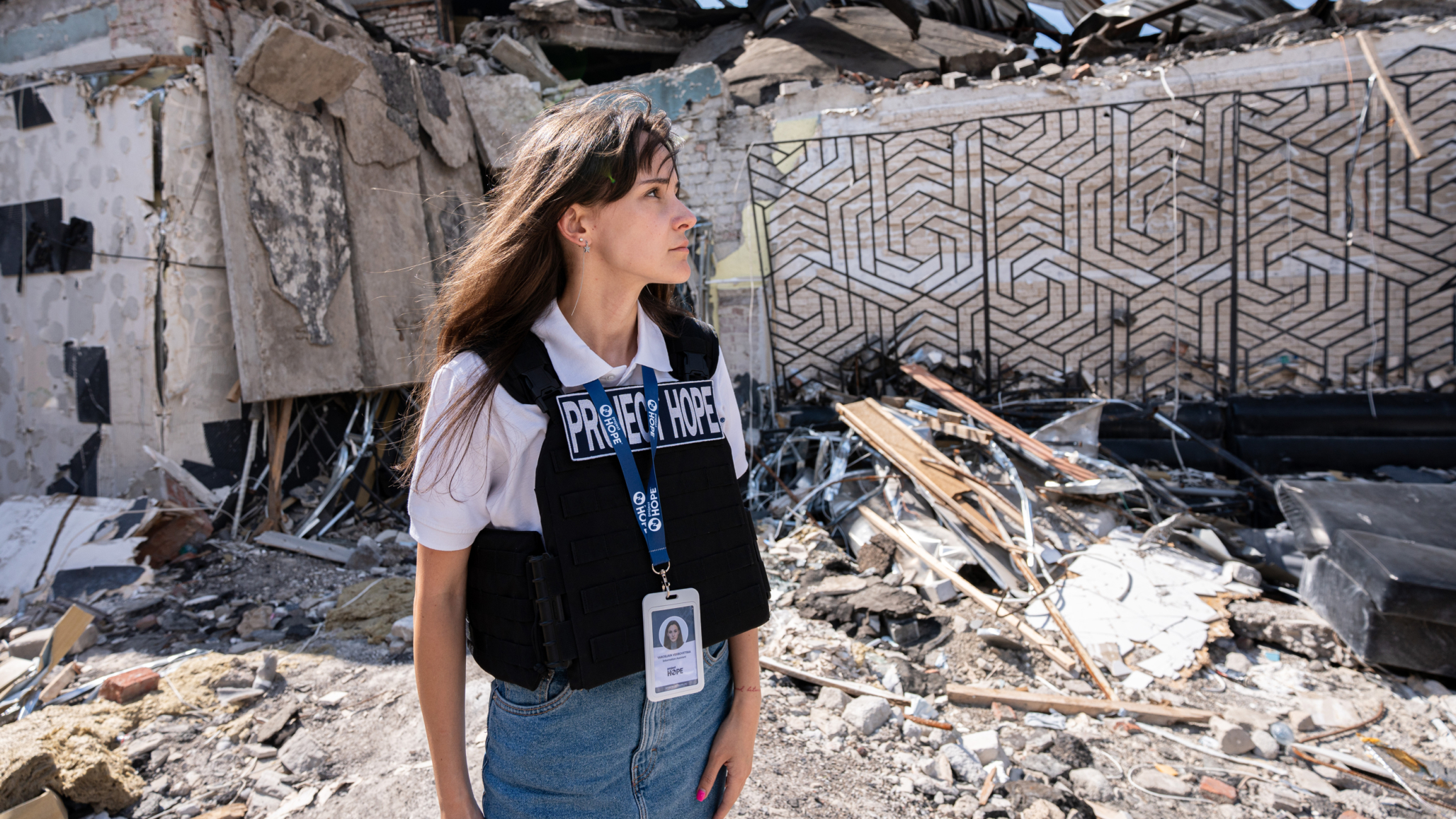4 Health Issues We’re Watching in 2025
Hear from Project HOPE’s team of technical experts about the most urgent global health issues we’re keeping an eye on this year.
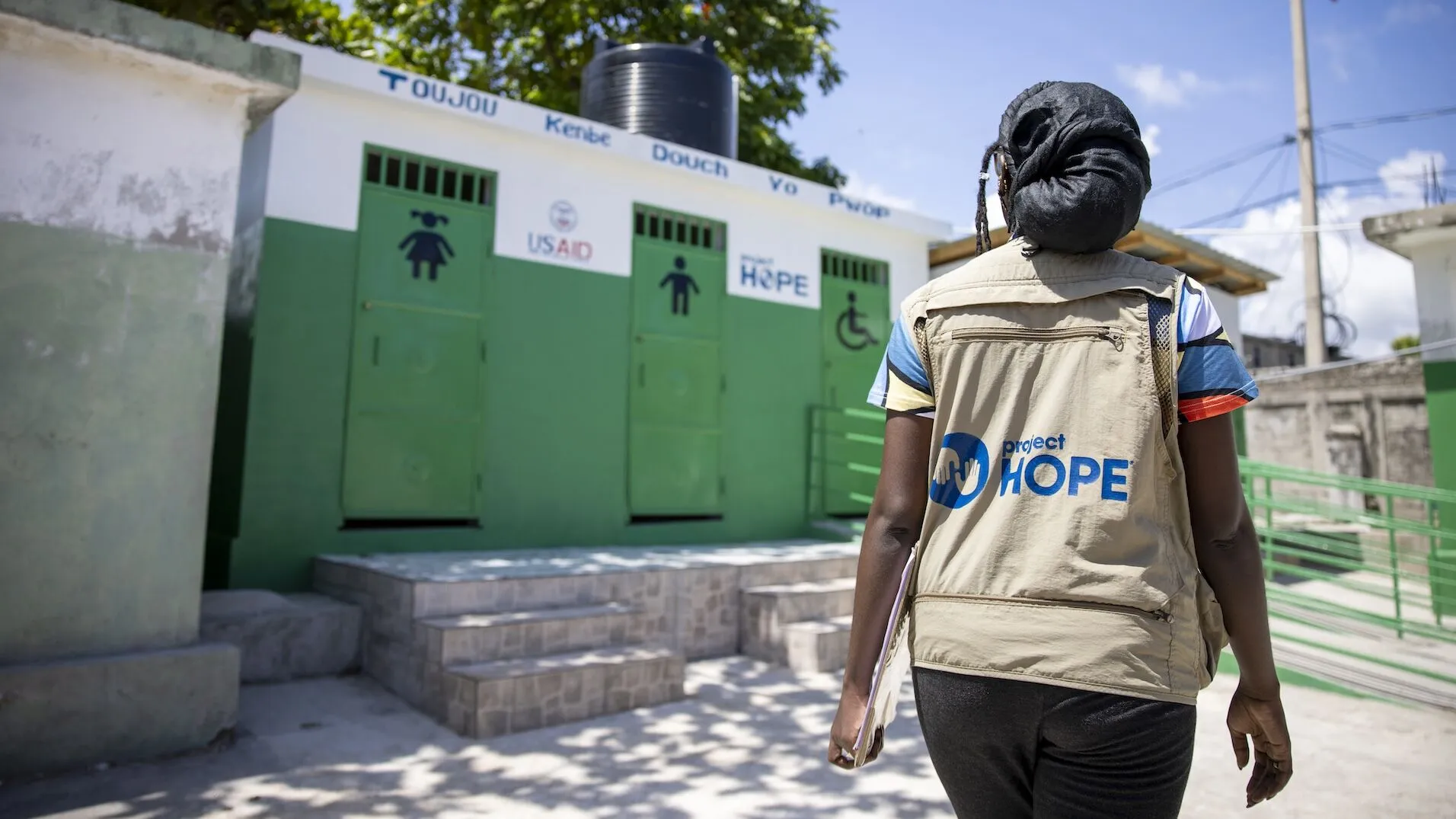
Interconnected crises sparked by conflict, displacement, poverty, and disease are putting unprecedented pressure on health systems and health workers around the world.
Amid compounding challenges, Project HOPE continues to show up on the front lines, helping health workers save lives during times of acute emergency and in the long-term. In the last year, Project HOPE reached nearly 4.4 million people, provided direct medical services to more than 2.8 million patients, screened 655,000 people for disease, and donated $79 million in essential equipment, medicines, and medical supplies.
As we look to the year ahead, we remain committed to addressing these challenges, focused on improving health for displaced women and girls, mitigating the threats of infectious diseases, prioritizing mental health and psychosocial support, and strengthening primary health care so everyone can access the care they need.
We asked our team of technical experts to share the most urgent health issues they’re watching this year and how we’re ready to respond. Here’s what they had to say.
1. A Maternal Health Emergency
Rondi Anderson
Senior Technical Advisor, RMNCH, Washington, D.C.
The extent of humanitarian crises is growing. In 2024, 300 million people were in need of humanitarian assistance worldwide and a record-breaking 122 million people were forcibly displaced by war, violence, and persecution by the end of June.
More than 75% of those in need of humanitarian assistance are women and girls ages 15 to 49. A lack of access to maternal health services is a leading cause of morbidity and mortality among the displaced. Sixty percent of preventable maternal deaths and 45% of neonatal deaths take place in displacement settings. Gender-based violence (GBV) leads to emotional trauma, unplanned pregnancies, and HIV and other sexually transmitted infections (STIs), affecting an estimated 20% of women living amid humanitarian crises.
More than 75% of those in need of humanitarian assistance are women and girls ages 15 to 49.
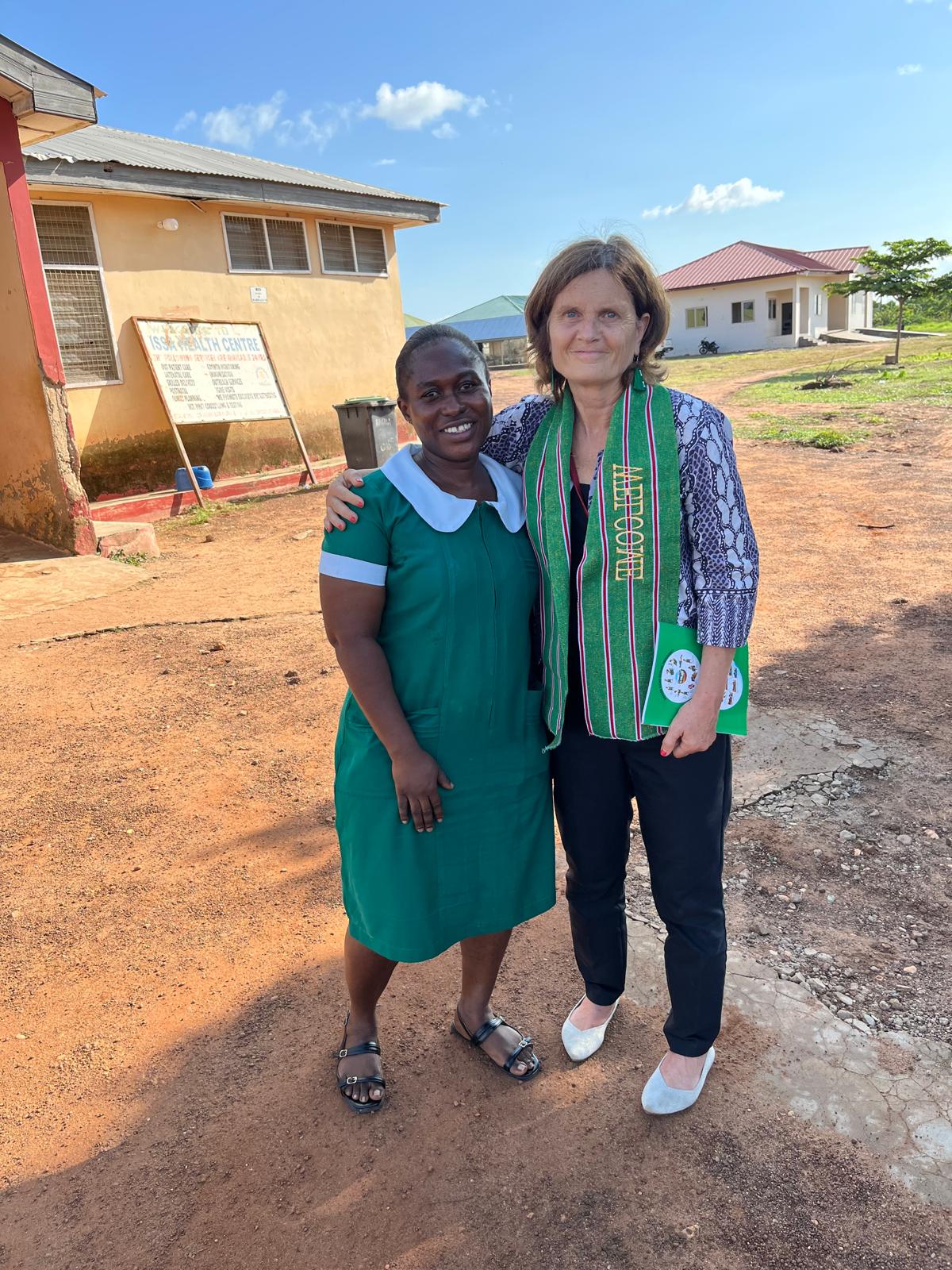
There is a global sphere standard for maternal health care in humanitarian contexts called the minimum initial service package (MISP). This standard mandates that governments and health partners ensure all women have access to a basic package of health care, including safe pregnancy and birth, prevention and treatment of STIs, and health response to GBV. Evidence finds that midwives fill critical gaps in services, notably for those most vulnerable to the impacts of humanitarian crises. Following World Health Organization guidance — and thanks to Project HOPE’s work — the midwifery workforce is becoming stronger.
At Project HOPE, we are responding to this crisis by supporting midwives and doctors to provide the maternal health minimum initial service package to displaced women and girls in Gaza, Lebanon, and Ukraine. In Gaza, we are supporting over 25 midwives to provide maternal health care in six outpatient clinics, seven remote communities, and one hospital maternity ward in conflict-affected areas. These midwives, all displaced themselves, provide comprehensive women’s health services. In addition to the basic MISP package, they are also providing antenatal and postnatal care, screening for malnutrition and mental health concerns, providing health education, tracking high-risk pregnant women, and offering referrals.
These midwives — including a team in Gaza City, which has been ravaged by the conflict —care for women in newly established health facilities near displacement camps, in hospitals damaged by conflict, and within tent shelters. Because of the stress of displacement, food insecurity, and loss of friends and family — all of which lead to more pregnancy risk — mental health and nutrition services are integrated into women’s health care as well. In 2025, we will expand our services to reach more women with lifesaving services.
2. The Threats of Endemic Infectious Disease
Endalkachew Melese
Senior Advisor, Infectious Diseases, Washington, D.C.
The COVID-19 pandemic and other recent infectious disease outbreaks have highlighted the urgent need for global preparedness and response systems. While much attention has been focused on combating new pandemics, the world must not overlook the long-standing battle against endemic infectious diseases that continue to wreak havoc on public health systems. Malaria, tuberculosis (TB), HIV and AIDS, hepatitis, and neglected tropical diseases (NTDs) are still among the top 10 major infectious diseases globally.
In 2023, TB returned to being the world’s top cause of death from a single infectious agent, following three years in which it was replaced by coronavirus disease. Though there are more than 10 million new TB cases annually, disease rates are heavily concentrated in 30 countries that account for 87% of the global total. The five nations with the highest rates of TB — India, Indonesia, China, the Philippines, and Pakistan — represent over half of the global TB cases, underscoring the need for targeted intervention strategies in these countries.
The five nations with the highest rates of TB — India, Indonesia, China, the Philippines, and Pakistan — represent over half of the global TB cases.
The global HIV response has moved closer to the goal of ending AIDS as a public health threat by 2030. Fewer people acquired HIV in 2023 than at any point since the late 1980s. Almost 31 million people were receiving lifesaving antiretroviral therapy in 2023, reducing AIDS-related deaths to their lowest levels since 2004. However, progress is uneven, particularly outside of sub-Saharan Africa, where new infections are still rising in at least 28 countries. Key populations remain underserved by many HIV programs, and nearly 9.3 million people who need lifesaving treatment are still missing out, particularly children and adolescents.
Malaria remains a major public health threat, with an estimated 263 million new cases and 597,000 deaths in 2023. The situation has worsened since 2015, and nearly 95% of global cases and 96% of deaths occur in 29 malaria-endemic countries. Nigeria, the Democratic Republic of the Congo, Uganda, Ethiopia, and Mozambique account for the largest share of global malaria cases and deaths. Efforts to combat malaria must continue to focus on these countries. Hepatitis, responsible for 1.3 million deaths in 2022, and NTDs, affecting 1.6 billion people globally, also require urgent attention.
As we look ahead to 2025, strengthening health systems is essential, especially in high-burden countries. At Project HOPE, we will continue investing in rights-based approaches and addressing social determinants of health to reduce inequities and remove barriers to health services. Moreover, we will help health systems integrate prevention and control efforts into their endemic infectious disease programs. These efforts will help build stronger global health systems capable of preventing and responding to both future pandemics and the ongoing burden of endemic diseases.
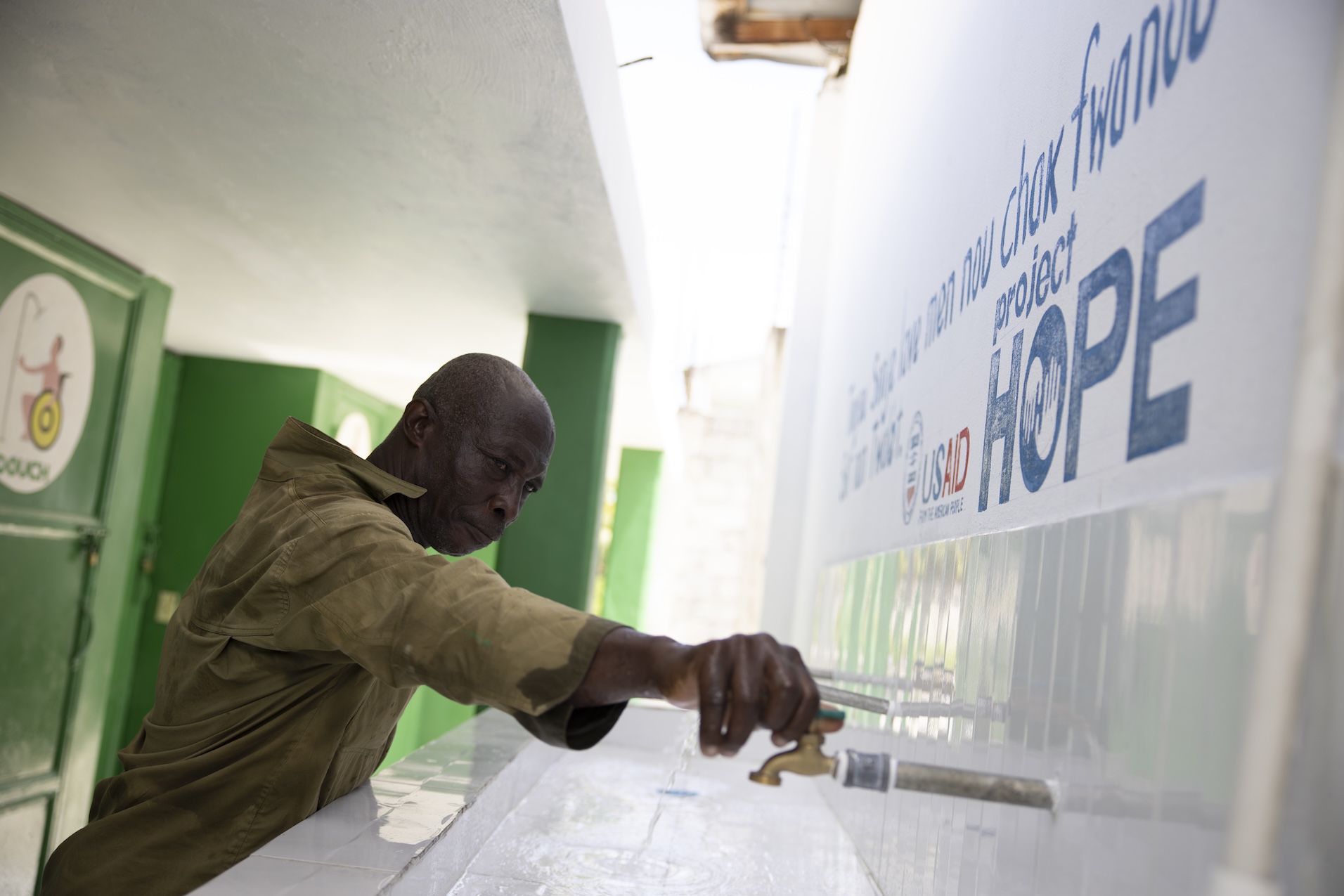
3. The Mental Health and Psychosocial Support Gaps
Pamela Londoño Salazar
Mental Health Advisor, Colombia
In 2024, ongoing crises such as the wars in Ukraine and Gaza, large-scale displacement across the Americas, and resurging conflicts in Lebanon and Syria placed immense psychological strain on affected populations.
As we begin 2025, Project HOPE will continue prioritizing mental health as a core element of our emergency responses, ensuring communities facing crisis receive the support they need to heal and rebuild their lives. Beyond emergency response, we also remain committed to mainstreaming mental health and psychosocial support (MHPSS) across our humanitarian and global health development programming.
Recognizing mental health as an essential component of health, we will address the emotional and psychological needs of people living with infectious diseases like HIV and TB, children battling cancer, individuals managing chronic conditions such as diabetes, and those affected by rare diseases like Gaucher Disease. Additionally, we will focus on enhancing emotional well-being initiatives for mothers, caregivers, and children, understanding their critical roles in fostering resilient communities.
Project HOPE will continue prioritizing mental health as a core element of our emergency responses, ensuring communities facing crisis receive the support they need to heal and rebuild their lives.
Long-term solutions remain central to our approach. This year, we will prioritize preventive mental health initiatives, leveraging innovative strategies to address root causes. Our focus will include often overlooked mental health crises, such as those affecting youth and health care workers. We aim to empower young people to prioritize self-care, recognize emotional well-being as essential, and seek help without stigma. Concurrently, we will protect health care workers from burnout and vicarious trauma, equipping them with tools to stay resilient in high-pressure environments.
Project HOPE will continue to integrate transformative approaches and address the unique needs of adolescent girls, young women, and vulnerable communities. This year, we remain dedicated to expanding health access, strengthening mental health systems, and ensuring MHPSS becomes a fundamental pillar of our global health programming worldwide.

4. Catastrophic Health Expenses and SDG Shortfalls
Uche Ralph-Opara
Chief Health Officer, Washington, D.C.
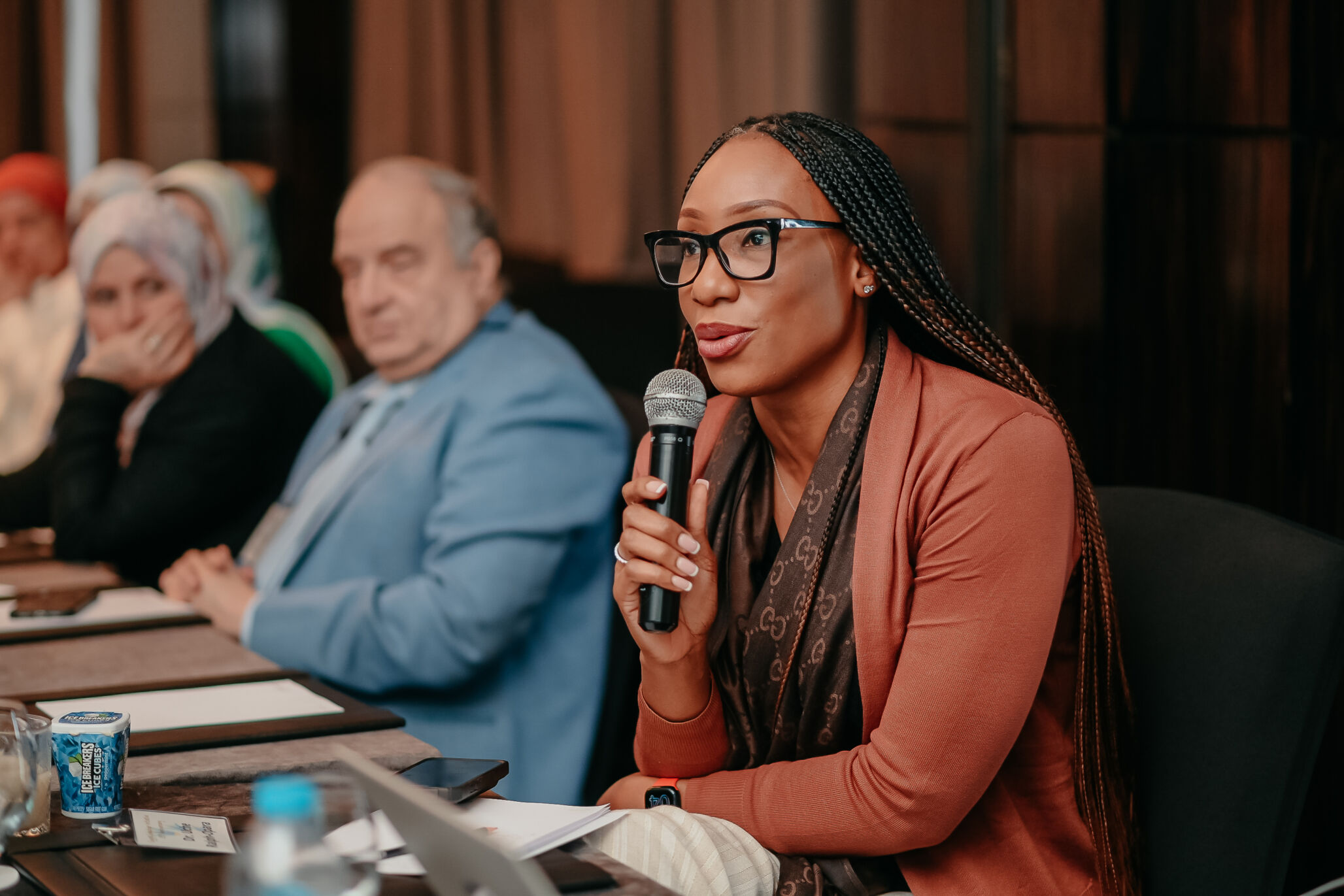
Health access and universal health coverage are key components of the United Nations’ Sustainable Development Goals (SDGs) and are critical steps to ensuring everyone has access to quality health care without financial hardship. Yet, half the world’s population still lacks essential health services, and approximately 930 million people are at risk of poverty due to catastrophic health expenses. The World Health Organization’s UHC Service Coverage Index, which stood at just 68 out of 100 in 2021, underscores the need for accelerated action to meet the SDGs.
Strengthening primary health care systems is the cornerstone of achieving universal health coverage and addressing health inequities. Primary health care can meet up to 90% of a person’s lifetime health needs and provide integrated services that address diseases, mental health needs, and maternal and child health services holistically. Success stories like Rwanda’s community-based health insurance scheme, which has achieved near-universal enrollment and reduced maternal and child mortality, demonstrate how investments in primary health care can transform health outcomes. Integrated primary health care services also enhance efficiency, minimize system fragmentation, and improve access for underserved populations.
Strengthening primary health care systems is the cornerstone of achieving universal health coverage and addressing health inequities.
As we move into 2025, achieving full health access and universal health care will require us to prioritize primary health care infrastructure, strengthen the health care workforce, and put forward innovative strategies. These efforts, coupled with strong partnerships and resource mobilization, will ensure health systems are inclusive, resilient, and better equipped to meet the needs of all individuals, empowering them to lead healthier lives.


